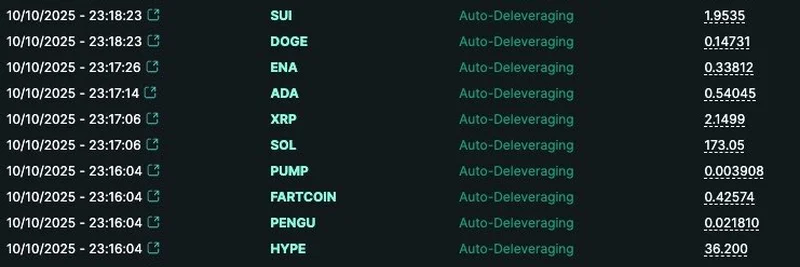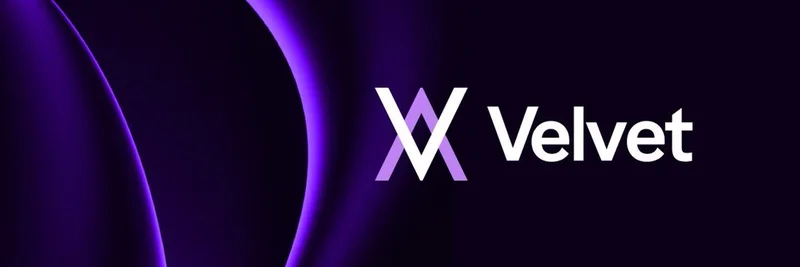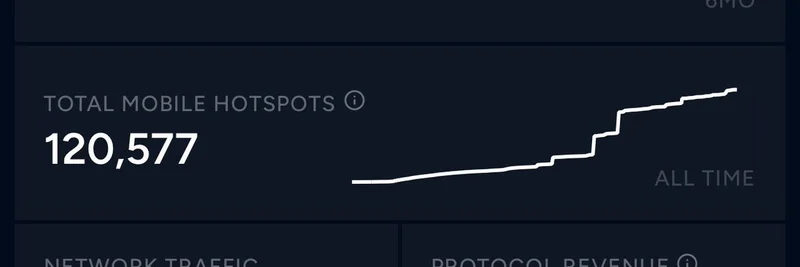In the wild world of crypto trading, where meme coins can skyrocket or crash in minutes, platforms like Hyperliquid are put to the ultimate test. Recently, a massive wave of volatility hit the markets, with many altcoins—including popular meme tokens like DOGE, WIF, and PENGU—plunging over 50%. Amid this chaos, Hyperliquid's co-founder Jeff (@chameleon_jeff) dropped a detailed thread on X explaining how their Layer 1 blockchain handled it all with flawless uptime and no bad debt. Let's break it down in simple terms, especially for those trading meme perps.
The Big Picture: Uptime and Solvency Win
Jeff kicks off with a TLDR that's music to any trader's ears: Hyperliquid stayed online 100% during the storm, avoided any bad debt, and experienced its first cross-margin Auto-Deleveraging (ADL) in over two years. ADL, for the uninitiated, is like the emergency brake in trading—it's a last-resort mechanism to keep the system solvent when liquidations pile up. Importantly, Jeff notes that ADL doesn't alter the fate of liquidated users; it just ensures the platform doesn't go under.
He calls out critics trying to bash Hyperliquid to cover their own platforms' failures. In crypto, especially with meme tokens that attract high-leverage bets, solvency (having enough funds to cover losses) and uptime (staying operational) are non-negotiable. Anything less is like playing Russian roulette with users' money.
Liquidations 101: Why They Happen and Why They Matter
Diving deeper, Jeff explains the basics of liquidations in perpetual futures (perps) trading—a favorite for meme coin speculators. Every position needs a minimum collateral called "maintenance margin." If the market tanks and your long position (betting on price up) at 2x leverage or more dips below this, the system liquidates you to prevent bad debt.
During the recent dip, billions in positions got wiped out on Hyperliquid. But here's the key: it's all on-chain and transparent. Users pick their own risk levels, and failing to liquidate risky positions would endanger everyone else. Compare that to other exchanges that might under-report liquidations—Hyperliquid's full transparency sets it apart, especially when meme coins like SOL or AVAX are involved.
Meet HLP: The Hero Behind the Scenes
Enter Hyperliquid Liquidity Provider (HLP), a permissionless vault that anyone can deposit into. It provides order book liquidity (though that's minor) and acts as a backstop for liquidations. When the order book can't handle a liquidation, HLP steps in, taking over the position and its collateral.
HLP is split into child vaults for better risk management, and it's designed as a public good—no liquidation fees here. During the volatility, HLP backstopped billions in positions, even getting undercollateralized itself in the process. This isolation ensures one bad liquidation doesn't tank the whole system.
ADL Demystified: Last Resort, Big Impact
If market and backstop liquidations fail, ADL kicks in. Jeff references Doug Colkitt's thread (check it out here) for the nitty-gritty. In ADL, undercollateralized positions (triggered side) are matched against profitable, high-leverage ones (providing side).
While some providing trades might sting individually—like partially closing a portfolio—overall, traders often close at favorable prices. This was Hyperliquid's first cross-margin ADL on mainnet, rare thanks to HLP's effectiveness. Isolated assets like hyperps see it more often.
In the event, HLP's child vaults were the biggest on the triggered side, letting providing traders pocket hundreds of millions in extra profits. Other platforms might pocket that as revenue, but Hyperliquid prioritizes fairness and transparency.
Community Reactions: Memes and Support
The thread sparked reactions, from supportive shouts of "Hyperliquid" to memes capturing the vibe. One user shared a heartfelt cartoon of a blob creature admiring Jeff's photo, captioned "There is no second Jeff." Another dropped a skeptical cat with wine, simply saying "hyperliquid." And of course, the classic Pepe meme: "I ain’t reading allat twin let’s just spot buy $pfp"—a nod to the meme token hustle amid the drama.
On the flip side, some traders vented frustration, claiming ADL favors losses over gains. But as Jeff and supporters point out, it's about system integrity, and emotions run high after big moves.
Why This Matters for Meme Token Traders
For blockchain practitioners and meme enthusiasts, this highlights Hyperliquid's edge in DeFi. With tokens like $HYPE powering the ecosystem, it's a platform built for resilience. Volatility is crypto's middle name, especially in memes, so choosing a transparent, uptime-focused exchange can save your portfolio.
Jeff wraps up with empathy for affected traders and a commitment to building the best platform. In a space full of hype and rugs, Hyperliquid's approach—fair, verifiable, and user-first—could set the standard. If you're trading meme perps, keep an eye on ADL and margin requirements; they might just be your lifeline in the next dip.
Stay informed, trade smart, and remember: in crypto, knowledge is your best leverage. For more on meme tokens and blockchain tech, stick with Meme Insider.



